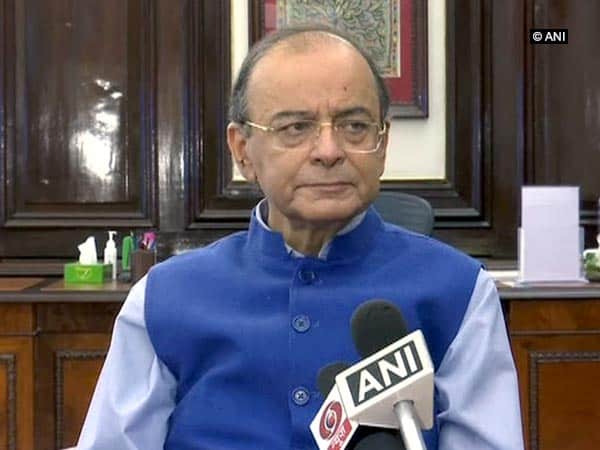New Delhi: A future road map could well be to work towards a single standard Goods and Services Tax (GST) rate instead of two standard rates of 12% and 18%, Union Finance Minister Arun Jaitley said on Monday.
“A future road map could well be to work towards a single standard rate instead of two standard rates of 12% and 18%. It could be a rate at some mid-point between the two. Obviously, this will take some reasonable time when the tax will rise significantly. The country should eventually have a GST which will have only slabs of zero, 5% and standard rate with luxury and sin goods as an exception,” he wrote in a Facebook blog.
Elaborating further on the future road map, the Finance Minister wrote, “With the GST transformation completed, we are close to completing the first set of rate of rationalisation i.e. phasing out the 28% slab except in luxury and sin goods.”
Jaitley also made a scathing attack on the Congress party and stated that those who oppressed India with a 31 per cent indirect tax and belittled GST must “seriously introspect”.
In his blog, Jaitley explained the GST scenario, including the pre-GST regime, its impact, revenue trend, rate rationalization and net effect.
“Those who oppressed India with a 31% indirect tax and consistently belittled the GST must seriously introspect.
Irresponsible politics and irresponsible economics is only a race to the bottom,” he said in the blog.
He said the political noise outside was “inconsistent” with the harmony inside the GST Council.
“It is a body that has behaved with utmost responsibility since its establishment,” the Finance Minister emphasized.
Targeting the previous Congress government, Jaitley said that India had the worst indirect tax system anywhere in the world.
“Both the Centre and the State Governments were entitled to levy a set of taxes. There were 17 taxes levied. An entrepreneur, therefore, faced seventeen inspectors, seventeen returns and seventeen assessments. The rate of taxation were exorbitantly high. The standard rate of VAT and excise was 14.5% and 12.5% respectively. To this could be added the CST and the cascading effect of tax on tax. The standard rate thus became 31% on a large number of commodities,” he said.
“The assessees had only two options – either to pay a high rate of tax or evade it. Tax evasion was prevalent to a large extent. India comprised of multiple markets. Each State was a separate market because the rate of tax could be different. Interstate sales became inherently inefficient because trucks had to wait for hours and days at the State borders,” he added.
Further talking about the GST, which was implemented w.e.f. July 1, 2017, Jaitley said the GST has been at the receiving end of a lot of ill-informed and motivated criticism.
He said the GST from the date of its implementation, has changed the situation radically.
“All seventeen taxes were combined into one. The whole of India became one market. The interstate barriers disappeared. Entry into the cities became open with the abolition of the entry tax,” he added.
He said the states were charging an entertainment tax from 35% to 110%, this came down radically.
“235 items were being charged at either 31% tax or even higher. All except 10 such items were brought down immediately to 28%. The 10 such items were brought down to even a lower rate i.e.18%,” he explained.
“Multiple slabs were fixed transiently in order to ensure the tax on no commodity goes up radically. This contained the inflation impact. Most Aam Aadmi items were placed in the 0 or 5% tax bracket. Returns became online; assessments will be online; multiple inspectors disappeared,” Jaitley said in his blog.
[source_without_link]ANI[/source_without_link]

